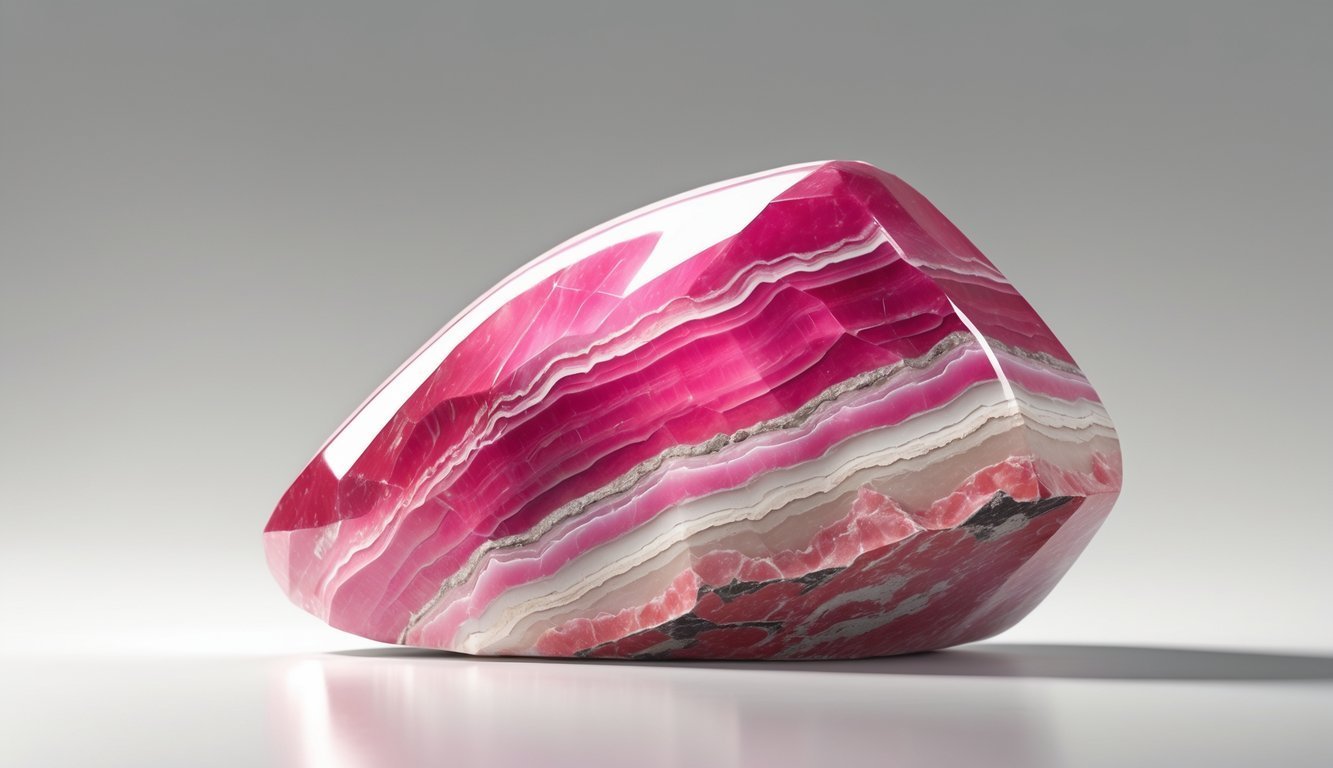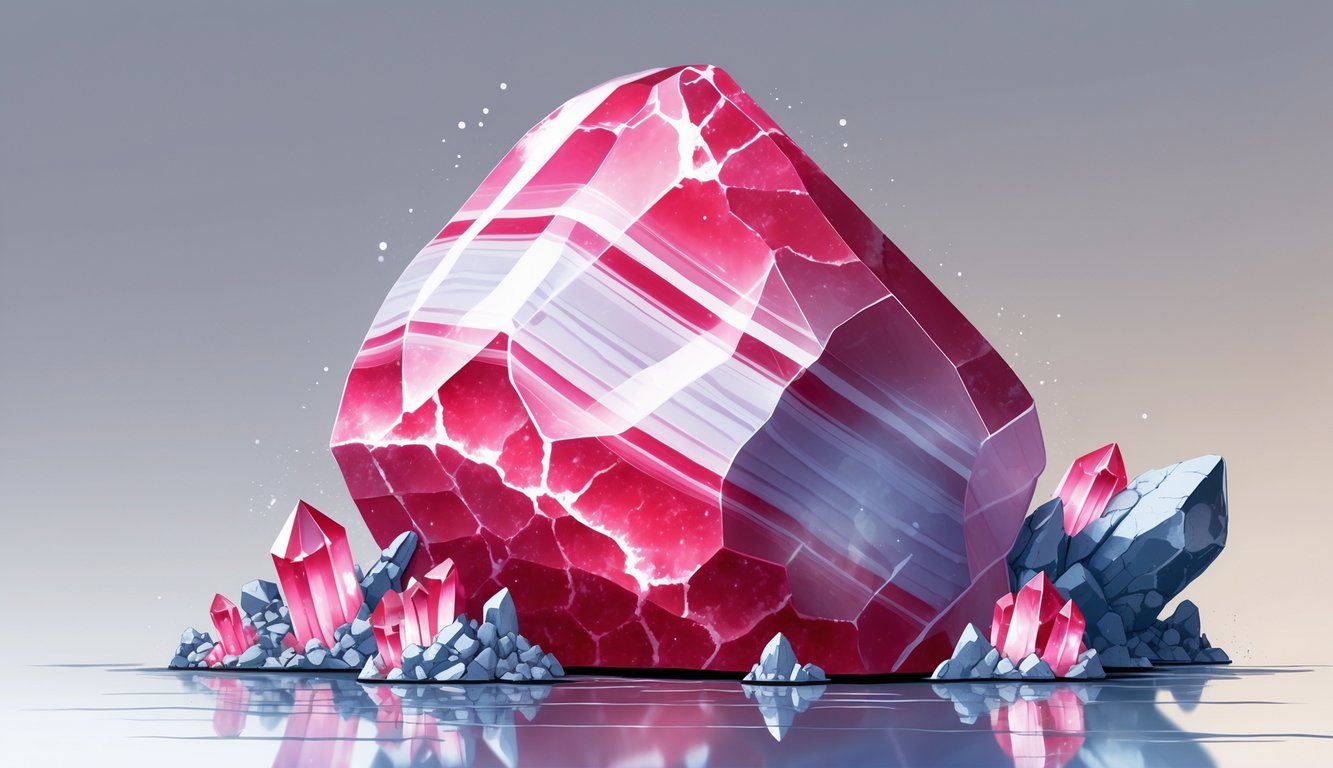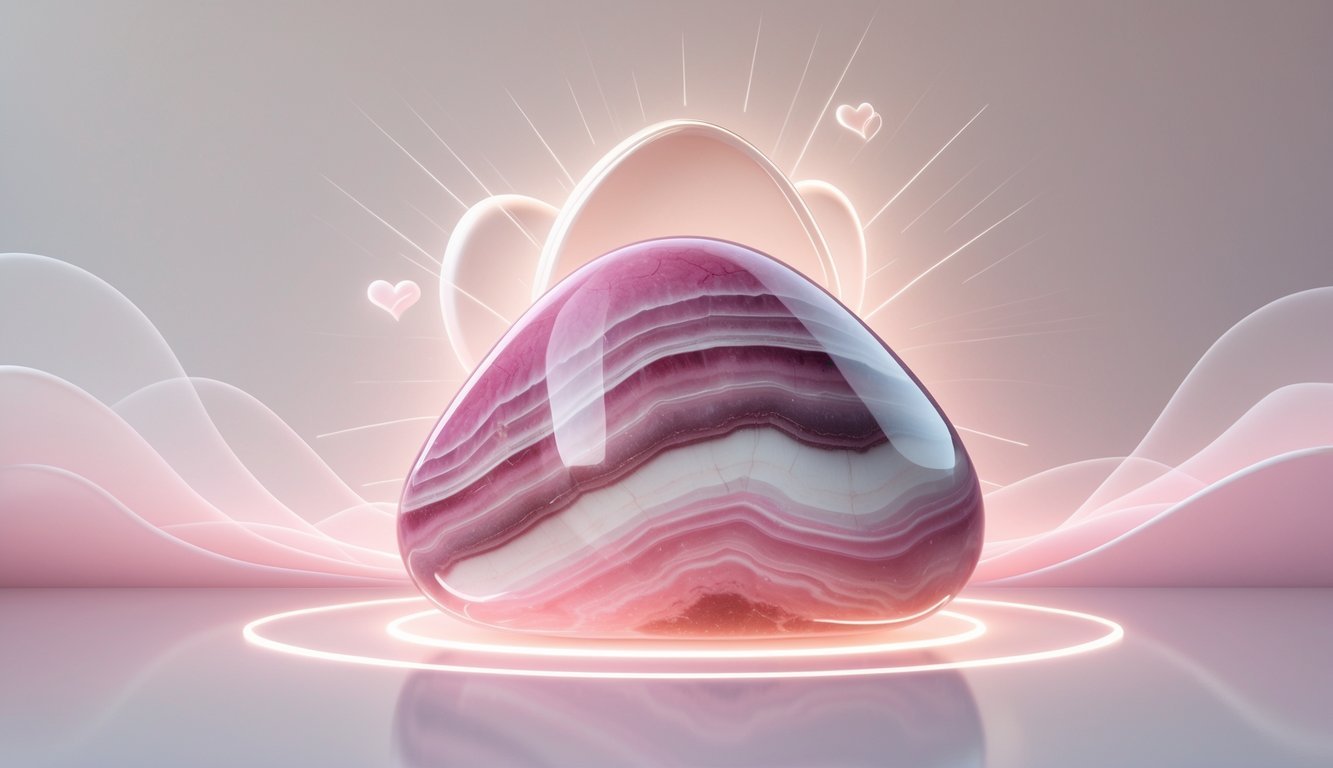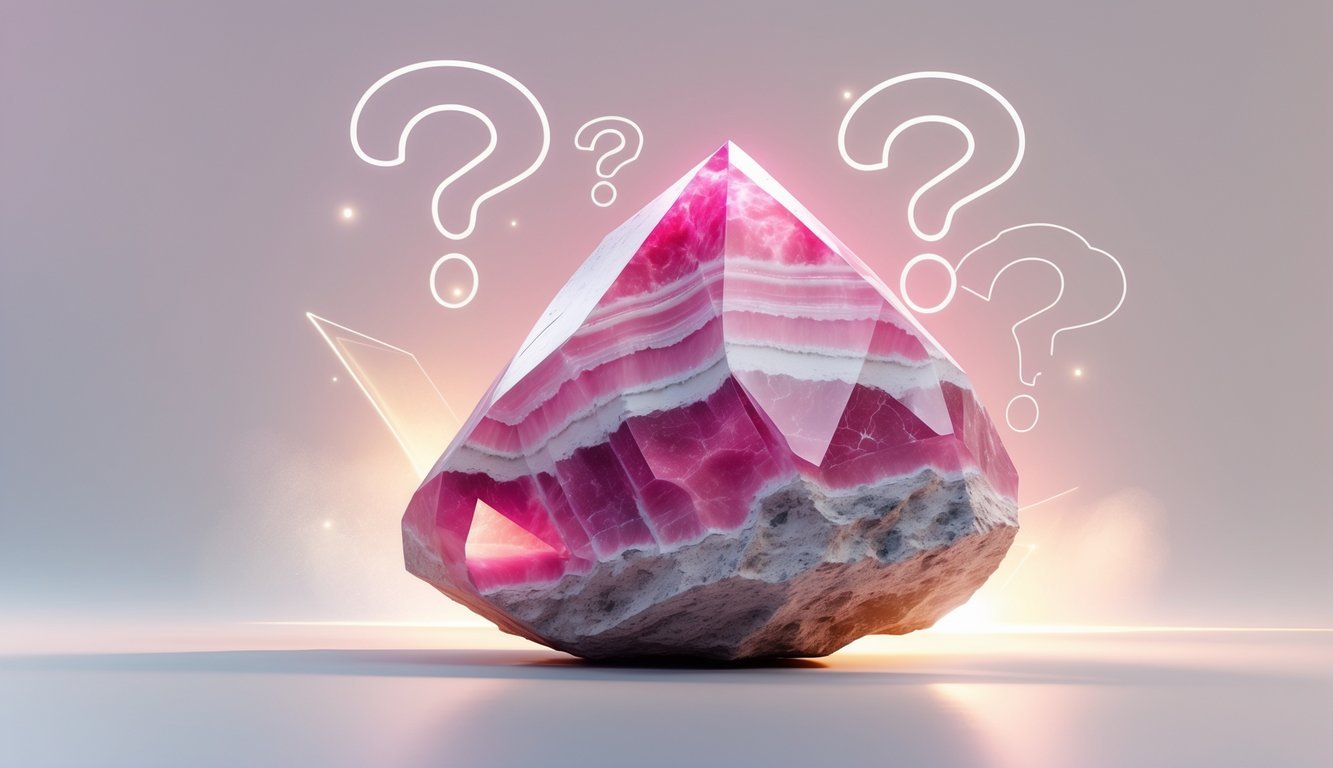PsychNewsDaily Publishers
100 Summit Drive
Burlington, MA, 01803
Telephone: (320) 349-2484
PsychNewsDaily Publishers
100 Summit Drive
Burlington, MA, 01803
Telephone: (320) 349-2484
Rhodochrosite is a pink mineral known for its vibrant colors, healing properties, and connections to love and emotional healing, commonly found in Argentina and Colorado.

Rhodochrosite is a beautiful pink mineral that really catches the eye with its bright, soft colors.
Collectors and jewelry fans love this stone for its rose-red hues. Jewelers shape it into everything from raw crystals to polished gems.
Besides looking stunning, rhodochrosite often gets credit for inspiring feelings like compassion and emotional connection.
People who are into personal growth, or just want a thoughtful gift, seem to gravitate toward it.
Curious about what actually makes rhodochrosite stand out in the crystal world? Let’s dig into its qualities and how folks use it.

Rhodochrosite stands out with its mix of soft colors and one-of-a-kind crystal shapes.
It’s made mostly of manganese, but you’ll notice some differences in color and form depending on where it comes from.
Miners dig up this stone in a few well-known locations around the world.
You’ll spot rhodochrosite mostly in shades of pink and red, with white or cream banding running through it.
Sometimes you’ll see hints of brown, grey, or even yellow—nature doesn’t always stick to the rules.
Those bands give the stone a layered, almost candy-like look that a lot of people find irresistible.
Crystals usually grow clear to translucent and have a trigonal shape.
That means you’ll see three-sided structures, often resembling rhombohedral crystals.
Rhodochrosite often shows a pearly luster on its surface, so it catches the light in a gentle, soft way.
Each piece has its own unique banded pattern, which honestly makes picking one out kind of fun.
Most of the time, rhodochrosite is just manganese carbonate (MnCO3).
Sometimes you’ll find a bit of calcium or other elements mixed in, but manganese is what gives it that pink or red color.
On the Mohs scale, it hits about 4 for hardness, so it’s definitely softer than a lot of other gemstones.
You’ll want to handle it gently because it scratches and chips pretty easily.
The stone breaks along smooth planes, thanks to its clear cleavage.
That’s something jewelers pay attention to when they cut or shape it.
Miners find rhodochrosite in several parts of the world.
Some of the best-known spots are:
You’ll often see this stone show up where manganese ore is common, especially in rocks that have weathered and formed cavities.

A lot of people connect rhodochrosite with love, healing, and emotional growth.
Some say it helps you work through tough feelings, build self-love, and find a sense of peace in your heart.
This stone’s energy can nudge you past emotional blockages, encouraging compassion and even a little more courage.
If you use rhodochrosite, it can help clear away energy blockages that keep you from feeling joy.
People say it soothes emotional pain and helps heal heartache.
The stone encourages forgiveness and can guide you to reconnect with your inner child.
Its calming energy is handy during meditation, letting you find clarity and emotional balance.
Rhodochrosite also supports self-confidence and helps you express love without judgment.
When you carry or wear it, you might feel more open to deeper relationships and emotional happiness.
The name rhodochrosite comes from the Greek word for “rose,” which makes sense given its color and heart connection.
The Inca people called it the “Inca Rose” and believed it brought strength and success.
It often stands for the ups and downs of life and your journey toward feeling whole.
This stone represents truth and emotional balance.
A lot of people see it as a guide for understanding feelings and finding courage when facing pain or old wounds.
Its deep meaning helps it symbolize compassion and self-love in different cultures.
People wear rhodochrosite as a gemstone in rings, necklaces, or bracelets so they can keep its energy close.
It’s especially popular in silver settings, which really make the colors pop.
Wearing rhodochrosite can remind you to look after your emotional well-being.
Besides jewelry, some folks use rhodochrosite as a decorative stone or carry it in a pocket for meditation.
Its gentle energy works nicely during spiritual practices, helping you stay calm and centered.
Whether you wear it or just keep it nearby, it serves as a daily reminder to care for your heart.
People often compare rhodochrosite to rhodonite, another pink gemstone.
Rhodochrosite feels softer and usually shows a brighter, more vibrant rose color.
You’ll often see calcite mixed in, giving the stone its unique patterns and extra softness.
When you’re buying or collecting, look for smooth surface patterns and strong pink hues.
Knowing the differences helps you pick the right rhodochrosite, whether you want it for healing, jewelry, or meditation.

Let’s answer some common questions about rhodochrosite—like how it affects emotions and spirit, how to choose a good one, and how to care for it.
Rhodochrosite can help reduce stress and calm your mind.
It encourages self-love and emotional healing.
Some people also find it boosts their energy and makes them feel more positive.
Using rhodochrosite can help you manage feelings like sadness or anger.
It supports kindness and promotes forgiveness toward yourself and others.
This stone encourages you to open your heart and express love more freely.
You can use rhodochrosite during meditation to improve self-awareness.
A lot of people carry it or keep it nearby to invite feelings of peace.
Some say it helps you connect with your emotions and deepen your spiritual growth.
Rhodochrosite connects closely with the Heart chakra.
It helps open and balance this chakra, which controls love and emotional energy.
By working on this chakra, you might find it easier to improve relationships and emotional health.
Look for a stone with a smooth, even pink color.
Quality stones usually have a bright color and some banding or patterns.
Try to avoid stones that are too brittle or full of cracks.
Gently clean your rhodochrosite with a soft cloth and a little mild soap. Don’t reach for harsh chemicals or soak it in water.
Keep the stone out of direct sunlight and away from heat. Too much exposure can cause it to fade or get damaged.